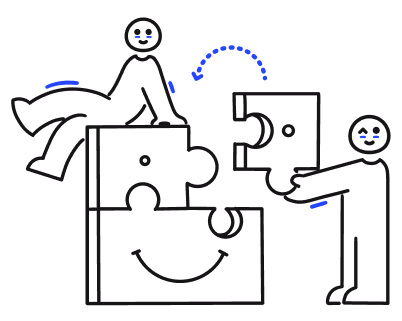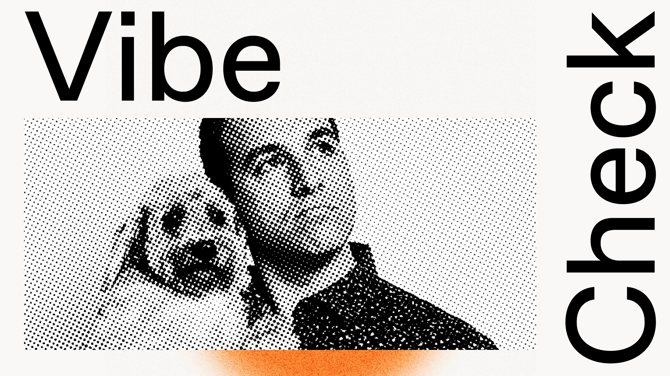JJ here from the Officevibe team. I’m beyond excited to start this new series with you today. If you don’t know me, one thing you need to know is that I love to geek out on anything related to people and culture: employee engagement, fueling performance, team dynamics, DEIB, and people development. Name it, I love it all.
What I also love is getting inspired by all the ongoing excellence in the field. Whether that's the latest research, conference, event, or webinar — I want to discuss what's happening in the HR space with you in this blog series. It’s about sharing learnings and insights with you so that we can reflect on them, too. Hopefully, this will spark discussions on what’s going on in our wonderful world of work!
Today’s post covers my download from Steve Boese's session “What employees want: how to cultivate and improve employee engagement” at SHRM’s Workplace Culture Virtual Retreat in November 2022.
Steve is the Co-Chair of the HR Technology Conference with H3 HR Advisors, Inc, and a Technology Editor and Writer for Human Resource Executive Magazine. He is also the creator and co-host of the weekly HR Happy Hour Show and Podcast (the longest and most downloaded podcast about HR, talent management, recruiting, and workplace tech).
From flawed to flawless: 5 steps to leading distributed teams

Here are my key takeaways from his talk:
What's hit the hardest
When polled live during the webinar on what has been hardest over the last three years, retention was the most popular answer from the audience, over adapting to remote work, adapting safety and security protocols, and employee engagement and well-being. Why? Second to compensation, people leave because of a lack of growth and development opportunities. Clearly, personal growth is a key factor for retention.
This reality in which growth opportunities are a top retention driver puts lots of focus and pressure on People & Culture teams to deploy new development and advancement strategies. Things like the below come to mind:
- building a talent and opportunity marketplace
- offering internal gigs to our employees
- bringing better visibility into internal roles and fast-tracking internal candidates
- implementing LMS systems to help with upskilling and reskilling (so much talk on this topic right now!)
- including career development as a regular component of one-on-ones
The arrival of the Great Reset
We are full of learnings from the last three years and can safely say that we are moving from the Great Resignation to the Great Retention. Employees have been reconsidering work's role in their lives for some time now. They are now centered on finding jobs and organizations that align with their values, priorities, and purposes.
This shift is being named the Great Reset. And as a result of it, organizations are rebuilding themselves. They are figuring out how they can respond to new employee expectations.
Speaking of new expectations, our own research highlighted that 70% of employees say they want to spend more time with their manager. Along with a need for more frequent recognition and clearer goals, meeting all these new expectations heavily relies on managers. Because of these changes, organizations must redesign work, structures, and processes to meet these new demands of the workforce. But I’ll come back to this later.
There's a new employment contract
Employee-employer relationships are no longer transactional: pay and benefits are now table stakes. Employee expectations are increasing and less tangible: values, purpose, social implication, and DEIB, to name a few. Competition is fierce, and organizations are looking for ways to differentiate. Culture is one of those differentiators. Let’s face it, competing on compensation is no longer a strategy.
Do you know how your team feels about your culture? Use this free employee survey template to gather their thoughts, perspectives, and insights to keep it thriving.
EX tech is in
There’s a massive rise in employee experience (EX) employee-driven technology:
- This tech is modernizing, and we’re moving past basic HR functions.
- Buyers and users are looking for simple, easy-to-use software and one platform rather than many for all things people-related.
- We’re seeing a trend for HR wanting to empower employees to own their data, like productivity metrics, engagement data, one-on-one notes and performance reviews, and enabling team members to request feedback from their peers on an ad-hoc basis.
- There’s a desire to make the EX simple and digital and to make it easy for employees to ask for help and info.
- Flexible compensation: there’s more and more popularity around letting employees personalize their experience, for example choosing amongst different types of benefits and tailoring perks to fit their personal preferences.
What we should take away from this: One size fits all no longer works.
A modern rhythm
Long gone are the days when we carve out a few weeks during the year to measure employee satisfaction with a survey that takes hours for employees to fill out and weeks for HR to analyze. Training is now happening on an ongoing basis with micro-learning replacing extensive training sessions. Annual reviews are being redesigned and complemented with frequent performance conversations. Yearly goals are being chunked out into smaller, more achievable quarterly goals.
I feel it only makes sense in the agile world we now live in — in which the only constant is change — that we transform the many parts of the employee experience into more frequent and ongoing events. Here are examples of EX moments that are becoming ongoing, as I like to call them:
- continuous feedback, sometimes even having the employee initiate the request for feedback
- regular check-ins between managers and team members
- flexible performance reviews
- frequent and timely recognition
Cause and effect
If a lot of the above impacts your People & Culture teams, I do want to draw attention to an important reality we tend to forget about:
Never has it been so demanding for managers to fulfill all their responsibilities for and with all their (unique) team members.
Yes, sharing continuous feedback and recognition and planning check-ins and one-on-ones that have meaning demands time and effort. The same goes for frequent performance reviews. However, they foremost demand skills like empathy, curiosity, and emotional intelligence.
We must remember that the manager drives so much of the employee experience. How much focus do we, the People & Culture teams, put on equipping our managers with the right tools and competencies to effectively lead their teams and engage with the new demands of their role?
What are you doing right now to help your managers develop these critical skills? How are you making their lives and work easier?
How do I do this, you ask?
Here are a few ideas:
- Enable your managers with software that is simple to use, built for them, and makes their one-on-ones and performance reviews easier to do. If this tool allows them to collaborate with employees in building one-on-one agendas and filling out reviews, it’s even better.
- Use tools that enable employees to ask their peers for feedback on an ongoing basis.
- One of the most stressful moments for managers is performance review time. It’s HR’s role to support them in the following ways:
- Communicate to managers how emotions impact evaluations.
- Give managers guidance on how to show empathy while assessing employees.
- Give managers plans for how to prepare for and respond to emotions during the evaluation conversation.
Reflecting on the past year, we can see the momentum for the year ahead. The good news is, modernizing the workplace doesn't have to mean a complete overhaul. These suggestions here can start as small initiatives that have a major impact.
Equip HR and managers with tools to engage, recognize, and drive performance.




